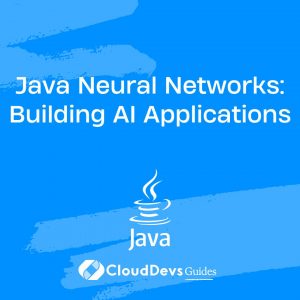Java Neural Networks: Building AI Applications
In the realm of artificial intelligence (AI), neural networks stand out as a powerhouse tool for solving complex problems and making predictions based on large datasets. With the rise of Java as a versatile programming language, developers are increasingly turning to Java neural networks to build robust AI applications. In this article, we’ll delve into the world of Java neural networks, exploring their functionality, benefits, and real-world applications.
Understanding Neural Networks
Neural networks, inspired by the structure and function of the human brain, consist of interconnected nodes arranged in layers. These nodes, also known as neurons, receive inputs, perform calculations, and pass on signals to other neurons. Through a process called training, neural networks learn to recognize patterns and make predictions based on the data they’re exposed to.
Why Java for Neural Networks?
Java, known for its platform independence, extensive libraries, and scalability, provides a solid foundation for building neural networks. With libraries like Deeplearning4j and Neuroph, Java developers have access to powerful tools for implementing neural networks without relying on external frameworks. Additionally, Java’s robust ecosystem and community support make it an ideal choice for AI development projects.
Benefits of Java Neural Networks
- Platform Independence: Java’s “write once, run anywhere” philosophy allows neural network models to be deployed across different platforms without modification, ensuring compatibility and ease of deployment.
- Scalability: Java’s scalability makes it well-suited for handling large datasets and complex AI models. Whether you’re working with millions of data points or training deep neural networks, Java can handle the task efficiently.
- Integration: Java’s seamless integration with other technologies and systems simplifies the process of incorporating neural networks into existing applications. Whether it’s web applications, mobile apps, or enterprise systems, Java neural networks can be seamlessly integrated into various environments.
Real-World Applications
- Predictive Analytics: Java neural networks are extensively used in predictive analytics applications, such as financial forecasting, sales prediction, and demand forecasting. By analyzing historical data, neural networks can identify patterns and trends, enabling businesses to make informed decisions.
- Image Recognition: Image recognition tasks, including object detection, facial recognition, and image classification, leverage the power of Java neural networks. With convolutional neural networks (CNNs) and libraries like Deeplearning4j, Java developers can build accurate and efficient image recognition systems.
- Natural Language Processing (NLP): NLP applications, such as sentiment analysis, language translation, and chatbots, benefit from Java neural networks’ ability to process and understand textual data. By training recurrent neural networks (RNNs) and transformer models, developers can create sophisticated NLP solutions in Java.
Examples of Java Neural Network Implementations
- Stock Price Prediction: In this example, a Java neural network is trained on historical stock market data to predict future stock prices. By analyzing factors such as price trends, trading volumes, and market sentiment, the neural network can forecast stock price movements with high accuracy.
- Medical Diagnosis: Java neural networks are used in medical diagnosis applications to analyze patient data and assist healthcare professionals in diagnosing diseases. By training on medical records, diagnostic imaging, and genetic data, neural networks can aid in early detection and treatment planning.
- Fraud Detection: Fraud detection systems utilize Java neural networks to identify suspicious activities and transactions. By analyzing transaction patterns, user behavior, and risk factors, neural networks can detect fraudulent behavior in real-time, helping organizations combat financial fraud.
Conclusion
Java neural networks offer a powerful solution for building AI applications across various domains. With their platform independence, scalability, and integration capabilities, Java neural networks empower developers to tackle complex problems and drive innovation. By leveraging the benefits of Java and harnessing the potential of neural networks, organizations can unlock new opportunities and achieve greater success in the era of artificial intelligence.
External Links:
- Deeplearning4j: Official website for Deeplearning4j, a deep learning library for Java and Scala.
- Neuroph: Neuroph is an open-source Java framework for neural network development.
- Java Neural Networks Tutorial: A comprehensive tutorial on building neural networks in Java, covering implementation details and best practices.
Table of Contents









